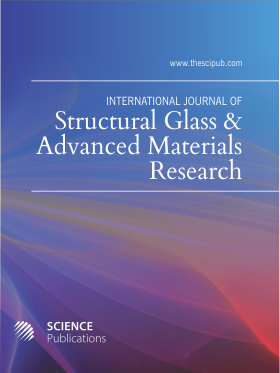Examination of Laminated Glass with Stiff Interlayers – Numerical and Experimental Research
- 1 Institute of Building Construction, Germany
- 2 Gundelfingen, Germany
- 3 Kuraray Europe GmbH – PVB Division, Germany
Abstract
Glass is a linear-elastic and isotropic building material which allows for a quick calculation of internal forces and stress in the design stage. However, in safety applications, e.g. overhead glazing or balustrades, it is made into laminated glass using plastic interlayers. Their material properties change over time and are temperature-dependent. Additionally, larger spans and the demand to reduce the amount of material used to a minimum result in significant slenderness and a considerable impact of geometric non-linearity. Consequently, the manufacturing of laminated glass products results in the requirement of complex design strategies to generate top performance. The paper introduces current design methods for laminated glass focusing on the potential use of shear action and covering load assumptions, including the effects of time and temperature. It includes a study on potential material models for three different interlayers. This led to a refined numerical model for load combinations considering shear action. For validation, vertical laminated glass panels (linearly supported on four sides) were loaded. The 36 specimens comprised two sizes: one measured 800 mm by 1200 mm and the other 1450 mm by 2800 mm and layers of glass with a thickness ranging from 3 mm to 4 mm. A planar load was introduced stepwise according to a load-time correlation model. Time and deflection correlate as a function of the interlayer. The idea was to quantify the performance of standard-PVB, stiff PVB and ionoplast interlayers as well as a monolithic glass pane as reference. The results show good agreement in comparison with the refined numerical calculations. Therefore, the load-bearing behaviour of laminated glass can be realistically modelled and allows for an economic glass design. Additionally, the numerical model was applied in an extended parametric study on the possible reduction of self-weight by using a combination of thin glass panes and stiff interlayers in insulated glass units. A resulting “butterfly chart” shows the potential of self-weight reduction as a broader summary.
DOI: https://doi.org/10.3844/sgamrsp.2019.1.14

- 6,244 Views
- 3,604 Downloads
- 16 Citations
Download
Keywords
- laminated Glass
- Stiff Interlayers
- Numerical Research
- Shear Action
- Experimental Research
- Refined Calculation Method
